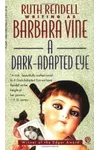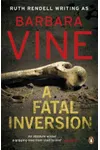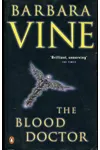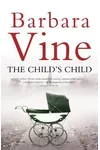Picture a British storyteller who spun chilling tales of family secrets and twisted psyches—meet Barbara Vine, the masterful pen name of Ruth Rendell! With her debut novel, A Dark-Adapted Eye, Vine redefined psychological crime fiction, hooking readers with elegant suspense and intricate human dramas. Her stories aren’t just mysteries; they’re deep dives into the shadows of the human heart.
Writing as Barbara Vine, Rendell crafted a unique niche, blending literary finesse with thrilling plots. Her work captivated readers worldwide, earning her an Edgar Award and a lasting legacy. Ready to unravel the enigma of Barbara Vine? Let’s dive into her life, works, and why she still matters today.
The Making of Barbara Vine
Born Ruth Barbara Grasemann on February 17, 1930, in London, Ruth Rendell grew up in a world of stories. Her parents, both teachers, sparked her love for literature, though her childhood wasn’t without tension—her mother’s Scandinavian roots and her parents’ strained marriage later inspired Vine’s complex family dynamics. After studying journalism, Rendell worked as a reporter, honing her knack for observation, before publishing her first novel, From Doon with Death, in 1964 under her own name. The Barbara Vine persona emerged in 1986, allowing her to explore darker, more psychological themes free from the constraints of her established detective series.
Barbara Vine’s Unforgettable Stories
Vine’s novels are like a fine wine—rich, layered, and lingering. Her debut, A Dark-Adapted Eye (1986), a gripping tale of family secrets and repressed memories, won the Edgar Award and set the tone for her signature style: slow-burning suspense, vivid characters, and haunting atmospheres. The novel’s exploration of a murder’s ripple effects through generations captivated readers and critics alike.
Other standouts include A Fatal Inversion (1987), a chilling story of a group of friends whose idyllic summer unravels into tragedy, and The House of Stairs (1988), which weaves a web of betrayal and obsession in a claustrophobic London setting. Vine’s style leans heavily on psychological depth, with themes of guilt, identity, and dysfunctional relationships. Unlike traditional whodunits, her stories focus on the why—what drives ordinary people to dark deeds? Her prose is elegant yet accessible, painting vivid settings that feel as real as the characters’ inner turmoil.
Vine published 14 novels, each a masterclass in storytelling. Her ability to blend literary sophistication with genre thrills made her a favorite among readers who craved more than simple mysteries. Whether it’s the eerie Norfolk coast or a stifling urban flat, her settings amplify the tension, making every page a journey into the unknown.
Why Barbara Vine Matters
Barbara Vine’s impact on psychological crime fiction is undeniable. By prioritizing character and motive over plot twists, she elevated the genre, inspiring authors like Tana French and Gillian Flynn. Her novels resonate because they’re timeless—family secrets and human flaws never go out of style. Vine’s work also challenged gender norms, presenting complex female characters who defied stereotypes in a male-dominated genre.
Her global readership and critical acclaim, including multiple awards, cemented her as a literary icon. Even after Rendell’s passing in 2015, Vine’s stories continue to captivate, offering a lens into the messy, fascinating depths of human nature. Her legacy lives on in every reader who picks up her books and gets lost in her world.
About Barbara Vine
- Birth Date: February 17, 1930 (as Ruth Rendell)
- Key Works: A Dark-Adapted Eye, A Fatal Inversion, The House of Stairs
- Awards: Edgar Award for A Dark-Adapted Eye (1987)
- Pen Name Debut: 1986
Image: Portrait of Barbara Vine, capturing her thoughtful gaze, perfect for a literary legend.
Ready to get lost in a world of secrets and suspense? Snag A Dark-Adapted Eye and dive into Barbara Vine’s thrilling psychological masterpieces!














